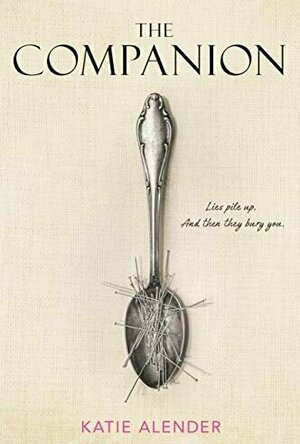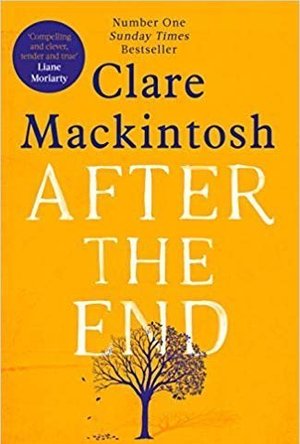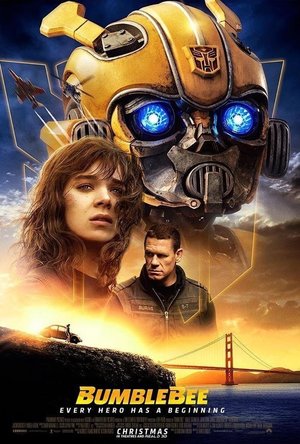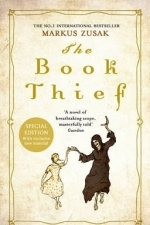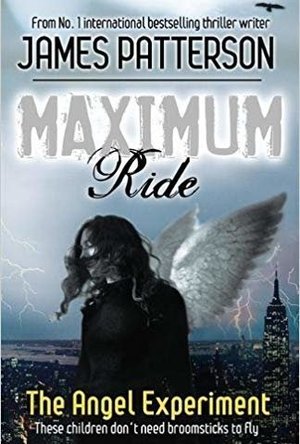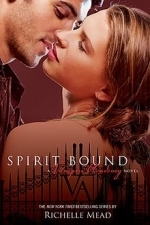Search
Search results
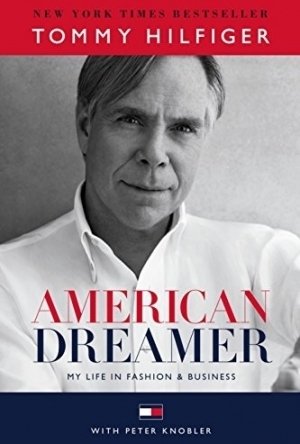
American Dreamer: My Life in Fashion & Business
Peter Knobler and Tommy Hilfiger
Book
In this tale of grit and glamour, setbacks and comebacks, business and pop culture icon Tommy...
Heather Cranmer (2721 KP) rated The Companion in Books
Jan 8, 2021
I've been a fan of Katie Alender's since I first read her book Bad Girls Don't Die. I haven't read a bad book from her yet, and reading Alender's latest book, The Companion, was no different. I enjoyed reading it.
After losing her parents and two younger sisters in a car accident, Margot is sent to the state institution as she has no other family. There, she has vivid nightmares that leave her screaming at night. The other orphans at the institution call her lucky although Margot isn't sure she'd consider herself lucky. When she is chosen by a rich family to come live with them at their large and gorgeous home, Margot's luck may be changing. However, it doesn't seem like it's for the better. Strange things are happening at Margot's new home. Plus, she's meant to play companion for the sick and mute Agatha. On the plus side, her nightmares have seemed to stop but at what price?
The plot of The Companion was a very strong one and had quite the creepy vibe to it which I thoroughly enjoyed. Everything about about the plot was solid and flowed smoothly. The pacing was superb, and I found myself dying to know what would happen next. In fact, I felt like I was actually part of the narrative the whole time. There are a few plot twists although I felt that most were easy to figure out long before they were revealed. While the majority of The Companion was a great read, the last 100 or so pages let this book down. Margot, the protagonist of the story, seems to lose her brain and common sense towards the ending of the novel. She does some really dumb things that put her life in danger. I had a hard time believing that anyone could be that dumb. Other than that, the rest of the story is really great! Loose ends are tied up by the end of the book. However, I would have liked to know how the flowers grew so quickly by a certain grave, but that's probably just a me thing.
All of the characters in The Companion were fleshed out enough to feel realistic. The only exception was Margot towards the end of the book as stated earlier. She started out so strong and smart, it was kind of a shock to see her dumbed down towards the ending. I had really enjoyed her character and her hunger to find out what was really going on when it came to Agatha as well as what happened to Lily. Agatha was definitely my favorite character. I loved how helpful and strong she tried to be despite what was going on with her. I liked Barrett, but I just wish he would have fought a bit harder to try to help Margot instead of just giving in all the time to his mom. Laura was definitely an interesting character for sure. I enjoyed trying to figure out her story alongside Margot. I felt that Laura was the best written character in The Companion.
Trigger warnings for The Companion include minor violence, death, murder, attempted murder, some heavy kissing, drugging, and gaslighting.
Although the last hundred pages do take away from the book a little, The Companion is still a worthwhile read. It does have an interesting plot and characters and will have you hooked from the very first page. I would recommend The Companion by Katie Alender to those aged 13+ who love a suspenseful story.
After losing her parents and two younger sisters in a car accident, Margot is sent to the state institution as she has no other family. There, she has vivid nightmares that leave her screaming at night. The other orphans at the institution call her lucky although Margot isn't sure she'd consider herself lucky. When she is chosen by a rich family to come live with them at their large and gorgeous home, Margot's luck may be changing. However, it doesn't seem like it's for the better. Strange things are happening at Margot's new home. Plus, she's meant to play companion for the sick and mute Agatha. On the plus side, her nightmares have seemed to stop but at what price?
The plot of The Companion was a very strong one and had quite the creepy vibe to it which I thoroughly enjoyed. Everything about about the plot was solid and flowed smoothly. The pacing was superb, and I found myself dying to know what would happen next. In fact, I felt like I was actually part of the narrative the whole time. There are a few plot twists although I felt that most were easy to figure out long before they were revealed. While the majority of The Companion was a great read, the last 100 or so pages let this book down. Margot, the protagonist of the story, seems to lose her brain and common sense towards the ending of the novel. She does some really dumb things that put her life in danger. I had a hard time believing that anyone could be that dumb. Other than that, the rest of the story is really great! Loose ends are tied up by the end of the book. However, I would have liked to know how the flowers grew so quickly by a certain grave, but that's probably just a me thing.
All of the characters in The Companion were fleshed out enough to feel realistic. The only exception was Margot towards the end of the book as stated earlier. She started out so strong and smart, it was kind of a shock to see her dumbed down towards the ending. I had really enjoyed her character and her hunger to find out what was really going on when it came to Agatha as well as what happened to Lily. Agatha was definitely my favorite character. I loved how helpful and strong she tried to be despite what was going on with her. I liked Barrett, but I just wish he would have fought a bit harder to try to help Margot instead of just giving in all the time to his mom. Laura was definitely an interesting character for sure. I enjoyed trying to figure out her story alongside Margot. I felt that Laura was the best written character in The Companion.
Trigger warnings for The Companion include minor violence, death, murder, attempted murder, some heavy kissing, drugging, and gaslighting.
Although the last hundred pages do take away from the book a little, The Companion is still a worthwhile read. It does have an interesting plot and characters and will have you hooked from the very first page. I would recommend The Companion by Katie Alender to those aged 13+ who love a suspenseful story.
Kristy H (1252 KP) rated After the End in Books
Jun 25, 2019
Max and Pip have a deep, untenable bond and a strong marriage that they feel is sealed by fate. But when their nearly three-year-old son, Dylan, gets sick, everything they know changes. Dylan has a brain tumor, and now Pip spends her days in the PICU, while Max tries to juggle work and being strong for his wife and child. Then, the couple receives the worst of all news: the chemo isn't helping Dylan's tumor, and the doctors feel Dylan's condition is terminal. Suddenly, Max and Pip find themselves on opposite sides--each wanting different medical treatment for their beloved boy.
Clare Mackintosh offers us a beautiful, poignant, and heartbreaking book based on her life experiences, having lost her own son. Knowing this makes the book even more tender and real, as each word is based on a kernel of truth. Reading this book isn't always easy--as a parent, my heart digested these words and put myself in the shoes of Max and Pip. This book makes you think, and it makes you so incredibly grateful for your own life, wanting to snuggle your own children and hold them dear.
"How can my son be a breath away from death, when evidence of his life is all around me? When I feel him in my heart, as surely as when I carried him in my womb?"
The story is one of loss, yes, but it's also a love story: Max and Pip, Dylan and his family, and more. We are introduced to Dylan's family and also to Dylan's doctor, Leila, whom I really liked. Leila has her own struggles. Her mom, Habibeh, is visiting, but won't leave the house, preferring to watch QVC and cook endlessly for her daughter. (Habibeh is a trip; she's awesome.) The decision of Dylan's fate falls on Leila's shoulders first: a lot for a young doctor to bear. We get the story through her eyes and then each of Dylan's parents. As a mom, I felt drawn to Pip, but I liked how we got both Pip and Max's perspectives. Each only wants what is best for their son--and, at first, each feels they are doing the right thing.
"However long you spend with someone, however well you think you know them, they can still be a stranger to you."
Mackintosh is best known for her thrillers, and, this book is just as well-written as those. And, interestingly enough, she throws in a bit of a twist here, too. I won't spoil it, per se, but will tell you that this book is a fascinating exploration of choices, allowing you to think about life and the various paths that everyone can take. It's a sad book, yes, but lovely too--a tribute to parents, medical professionals, and to the children we love so much. It's a reminder to cherish those we hold dear and that life can be short but beautiful, no matter which way it may turn out.
Overall, even though I found this difficult to read at times, I'm really glad I did. I was reminded, yet again, what a good writer Clare Mackintosh is. I'm so incredibly sorry she lost her son, and I'm in such awe that she could turn that loss into such a lovely book. I highly recommend this--it's a beautiful exploration of life's different paths and what fate can bring us.
Clare Mackintosh offers us a beautiful, poignant, and heartbreaking book based on her life experiences, having lost her own son. Knowing this makes the book even more tender and real, as each word is based on a kernel of truth. Reading this book isn't always easy--as a parent, my heart digested these words and put myself in the shoes of Max and Pip. This book makes you think, and it makes you so incredibly grateful for your own life, wanting to snuggle your own children and hold them dear.
"How can my son be a breath away from death, when evidence of his life is all around me? When I feel him in my heart, as surely as when I carried him in my womb?"
The story is one of loss, yes, but it's also a love story: Max and Pip, Dylan and his family, and more. We are introduced to Dylan's family and also to Dylan's doctor, Leila, whom I really liked. Leila has her own struggles. Her mom, Habibeh, is visiting, but won't leave the house, preferring to watch QVC and cook endlessly for her daughter. (Habibeh is a trip; she's awesome.) The decision of Dylan's fate falls on Leila's shoulders first: a lot for a young doctor to bear. We get the story through her eyes and then each of Dylan's parents. As a mom, I felt drawn to Pip, but I liked how we got both Pip and Max's perspectives. Each only wants what is best for their son--and, at first, each feels they are doing the right thing.
"However long you spend with someone, however well you think you know them, they can still be a stranger to you."
Mackintosh is best known for her thrillers, and, this book is just as well-written as those. And, interestingly enough, she throws in a bit of a twist here, too. I won't spoil it, per se, but will tell you that this book is a fascinating exploration of choices, allowing you to think about life and the various paths that everyone can take. It's a sad book, yes, but lovely too--a tribute to parents, medical professionals, and to the children we love so much. It's a reminder to cherish those we hold dear and that life can be short but beautiful, no matter which way it may turn out.
Overall, even though I found this difficult to read at times, I'm really glad I did. I was reminded, yet again, what a good writer Clare Mackintosh is. I'm so incredibly sorry she lost her son, and I'm in such awe that she could turn that loss into such a lovely book. I highly recommend this--it's a beautiful exploration of life's different paths and what fate can bring us.
Emma @ The Movies (1786 KP) rated Bumblebee (2018) in Movies
Sep 25, 2019
I'm really torn by this film. I enjoyed it but at the same time it isn't amazing. It's got all the classic formulas in it. Charlie is still trying to make sense of her father's death. Bumblebee is trying to remember who he is. Together they help each other... it really could be one of many films.
Something I'm pleased to discover is that other people were getting Herbie vibes from this. In the notes I was jotting down for my review I put "this would make a pretty good Herbie story". And then I pondered the possibility that Herbie was a Transformer who was broken and stuck in his Beetle shape.
The opening battle on Cyberton is surprisingly natural considering it's made up of CGId robots. It makes for a great opening. But I wasn't wowed. I should have been blown away by the effects and I just wasn't.
Bumblebee as a character was a real joy. After his memory is damaged he's basically back to being a scared little boy and the animation reflects that incredibly well. Everything about him is inquisitive and childlike, and all the little touches are there to really bring him to life. He's very human in the moments before he gets his memory back.
There are so many of his scenes that were genuinely pleasing to watch. Him waving at Charlie as she chases after them. The cassette tapes. The extended toilet paper prank and house demolition scenes. Probably my favourite bit though is where he's sitting in the forest and she's trying to fix him, his fidgeting is adorable.
When it comes to the cast feels like we've got the members of a comedy working on a drama/action film. They work well with what they've got and we get some enjoyable performances but there's nothing that really sticks in the memory.
I still enjoyed Bumblebee but I can't say that I found it to be any better than previous films in the franchise, certainly not on the action and graphics side of things. The soundtrack is full of some classic tunes that are very well placed, and the overall vibe of that combined with everything else is spot on for the 80s. You do forget it's set in 1987 though, which means that little things pop up like the TV and the technology that the military have and you feel like the films has already dated.
This is the first Transformers movie to get a PG rating in the UK, previously they've all been rated 12. It's definitely family friendly... but... it reminds me more and more of Herbie every moment I think about it.
As a last thought... seriously, Charlie? You have your moments. "If we're driving down the street and we see someone you have to hide"... if you're driving down the street he's a car anyway, hiding would make it more obvious that he's not just a car. You draw more attention to Bee than he does. Blindfolding yourself with Memo's shirt (weird moment in the film by the way, creepily out of place) and then standing out the sunroof? That won't make you more noticeable to passersby.
What you should do
It's an enjoyable film and should make for a fun family outing. I don't think there's any particular rush to see it in the cinema though.
Movie thing you wish you could take home
Who wouldn't want they're own Transformer who can change into any car it wants AND can dance?!
Something I'm pleased to discover is that other people were getting Herbie vibes from this. In the notes I was jotting down for my review I put "this would make a pretty good Herbie story". And then I pondered the possibility that Herbie was a Transformer who was broken and stuck in his Beetle shape.
The opening battle on Cyberton is surprisingly natural considering it's made up of CGId robots. It makes for a great opening. But I wasn't wowed. I should have been blown away by the effects and I just wasn't.
Bumblebee as a character was a real joy. After his memory is damaged he's basically back to being a scared little boy and the animation reflects that incredibly well. Everything about him is inquisitive and childlike, and all the little touches are there to really bring him to life. He's very human in the moments before he gets his memory back.
There are so many of his scenes that were genuinely pleasing to watch. Him waving at Charlie as she chases after them. The cassette tapes. The extended toilet paper prank and house demolition scenes. Probably my favourite bit though is where he's sitting in the forest and she's trying to fix him, his fidgeting is adorable.
When it comes to the cast feels like we've got the members of a comedy working on a drama/action film. They work well with what they've got and we get some enjoyable performances but there's nothing that really sticks in the memory.
I still enjoyed Bumblebee but I can't say that I found it to be any better than previous films in the franchise, certainly not on the action and graphics side of things. The soundtrack is full of some classic tunes that are very well placed, and the overall vibe of that combined with everything else is spot on for the 80s. You do forget it's set in 1987 though, which means that little things pop up like the TV and the technology that the military have and you feel like the films has already dated.
This is the first Transformers movie to get a PG rating in the UK, previously they've all been rated 12. It's definitely family friendly... but... it reminds me more and more of Herbie every moment I think about it.
As a last thought... seriously, Charlie? You have your moments. "If we're driving down the street and we see someone you have to hide"... if you're driving down the street he's a car anyway, hiding would make it more obvious that he's not just a car. You draw more attention to Bee than he does. Blindfolding yourself with Memo's shirt (weird moment in the film by the way, creepily out of place) and then standing out the sunroof? That won't make you more noticeable to passersby.
What you should do
It's an enjoyable film and should make for a fun family outing. I don't think there's any particular rush to see it in the cinema though.
Movie thing you wish you could take home
Who wouldn't want they're own Transformer who can change into any car it wants AND can dance?!

My PlayHome
Entertainment and Education
App
▶ Featured in THE NEW YORK TIMES: Apps to Keep Children Happy ▶ TOP 10 BEST KIDS APPS OF THE...
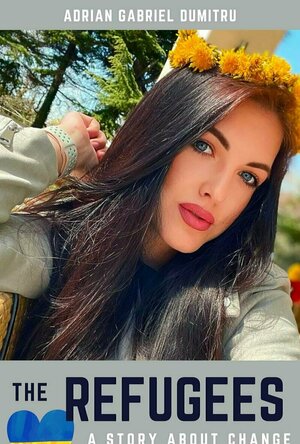
The Refugees...A Story About Change
Book
If there is something i love the most in this life …. I believe it is … socializing with the...
Acanthea Grimscythe (300 KP) rated Green Darkness in Books
May 16, 2018
Having picked <i>Green Darkness</i> up from the local library bookstore sale for only a quarter, I truly had no idea what I was getting myself into. Historical fiction, in any form, is not a genre that I've spent much time with, and coupling that with paranormal romance? Well, we can safely say that I was in for a ride.
<i>Green Darkness</i> shares the harrowing tale of forbidden love in mid-1500s England between an unfortunate peasant girl and a Benedictine monk, betwixt the reigns of King Edward VI, Queen Mary I, and Queen Elizabeth - a time when Catholicism and Protestantism (depending on the ruler) were met with persecution. It doesn't begin in that era, however; rather, the story starts in the 1960s, when Celia and her newly wedded husband, Richard Marsdon, arrive at his family's ancestral estate in Sussex. A baffling illness befalls the Marsdons, leaving the unorthodox physician, Doctor Akananda, to unravel the mysterious past that haunts the pair from hundreds of years before.
The twisting tale that unravels of that love affair is only a small part of what I enjoyed about this book, as romance is not typically my cup of tea. What truly enticed me was [a:Anya Seton|18930|Anya Seton|https://d.gr-assets.com/authors/1224813438p2/18930.jpg]'s faithfulness not only to history, but to location, legend, and use of historical figures. Cowdray House and Ightham Mote are real places, and an unfounded rumor regarding the Mote suggests that a female skeleton was found within its walls - which Seton used as a basis for her story. Through Seton, I discovered an unknown love for Tudor England, and undoubtedly I will read more books set in that time period.
Despite my praise for the book, I was unable to give it a five star rating because of its conclusion: it was as if Seton ran out of fuel. The idea of reincarnation takes a more ridiculous turn when Doctor Akananda hints at more pasts that conveniently interlock the same people. As if that were not enough of an affront, the resolution itself fell flat. With the Marsdon family tragedy conveniently wrapped up, Celia and Stephen seem aloof and their interaction felt a bit too forced. It is for this reason that I gave the book four stars.
<i>Green Darkness</i> shares the harrowing tale of forbidden love in mid-1500s England between an unfortunate peasant girl and a Benedictine monk, betwixt the reigns of King Edward VI, Queen Mary I, and Queen Elizabeth - a time when Catholicism and Protestantism (depending on the ruler) were met with persecution. It doesn't begin in that era, however; rather, the story starts in the 1960s, when Celia and her newly wedded husband, Richard Marsdon, arrive at his family's ancestral estate in Sussex. A baffling illness befalls the Marsdons, leaving the unorthodox physician, Doctor Akananda, to unravel the mysterious past that haunts the pair from hundreds of years before.
The twisting tale that unravels of that love affair is only a small part of what I enjoyed about this book, as romance is not typically my cup of tea. What truly enticed me was [a:Anya Seton|18930|Anya Seton|https://d.gr-assets.com/authors/1224813438p2/18930.jpg]'s faithfulness not only to history, but to location, legend, and use of historical figures. Cowdray House and Ightham Mote are real places, and an unfounded rumor regarding the Mote suggests that a female skeleton was found within its walls - which Seton used as a basis for her story. Through Seton, I discovered an unknown love for Tudor England, and undoubtedly I will read more books set in that time period.
Despite my praise for the book, I was unable to give it a five star rating because of its conclusion: it was as if Seton ran out of fuel. The idea of reincarnation takes a more ridiculous turn when Doctor Akananda hints at more pasts that conveniently interlock the same people. As if that were not enough of an affront, the resolution itself fell flat. With the Marsdon family tragedy conveniently wrapped up, Celia and Stephen seem aloof and their interaction felt a bit too forced. It is for this reason that I gave the book four stars.
Whatchareadin (174 KP) rated The Book Thief in Books
May 10, 2018
4.5 stars
Liesel Meminger is 9 years old and it is 1939. Her mother is taking her and her brother to live with another family where they will be safe. Unfortunately, the brother doesn't make it. Liesel takes only two things with her to her new home; the memory of her brother and her first stolen book, <u>The Gravediggers Handbook</u>.
When Liesel arrives on Himmel street in Molching, Germany, she is greeted by Rosa and Hans Hubermann. They welcome her into their home and she immediately is to call them Mama and Papa. Even though Liesel is illiterate, Hans works with her every night when she is awakened with nightmares of her brothers death. They retreat to the basement to do their reading.
For 5 years, Liesel lives on Himmel street during one of the most treacherous times in Germany. She makes friends and enemies along the way and steals 5 more books.
First I would like to thank [a:Victoria Dougherty|8054971|Victoria Dougherty|https://d.gr-assets.com/authors/1394817245p2/8054971.jpg]for recommending this book to me. I have always been a fan of historical fiction and this book did not disappoint in any way, shape or form. I thoroughly enjoyed this story. I could see myself on Himmel Street with Liesel. I could see what she could see and I could feel the torment she went through. I thank God every time I finish a book like this because I live in a place and a time where these things aren't a constant worry for me. I don't have to have my possessions packed and ready to go when I raid sirens going off. I don't even hear raid sirens. This is a book everyone needs to read if they haven't.
Another thing I found very interesting in this book was that it was narrated by death. If that's not enough to make you want to read this...One of my favorite passages in the book is this "Here is a small fact...You are going to die." Simple but true. One day we all will die. I hope and pray it is not in the way that the multitudes of people died in this book, but I know that one day it will happen.
Liesel Meminger is 9 years old and it is 1939. Her mother is taking her and her brother to live with another family where they will be safe. Unfortunately, the brother doesn't make it. Liesel takes only two things with her to her new home; the memory of her brother and her first stolen book, <u>The Gravediggers Handbook</u>.
When Liesel arrives on Himmel street in Molching, Germany, she is greeted by Rosa and Hans Hubermann. They welcome her into their home and she immediately is to call them Mama and Papa. Even though Liesel is illiterate, Hans works with her every night when she is awakened with nightmares of her brothers death. They retreat to the basement to do their reading.
For 5 years, Liesel lives on Himmel street during one of the most treacherous times in Germany. She makes friends and enemies along the way and steals 5 more books.
First I would like to thank [a:Victoria Dougherty|8054971|Victoria Dougherty|https://d.gr-assets.com/authors/1394817245p2/8054971.jpg]for recommending this book to me. I have always been a fan of historical fiction and this book did not disappoint in any way, shape or form. I thoroughly enjoyed this story. I could see myself on Himmel Street with Liesel. I could see what she could see and I could feel the torment she went through. I thank God every time I finish a book like this because I live in a place and a time where these things aren't a constant worry for me. I don't have to have my possessions packed and ready to go when I raid sirens going off. I don't even hear raid sirens. This is a book everyone needs to read if they haven't.
Another thing I found very interesting in this book was that it was narrated by death. If that's not enough to make you want to read this...One of my favorite passages in the book is this "Here is a small fact...You are going to die." Simple but true. One day we all will die. I hope and pray it is not in the way that the multitudes of people died in this book, but I know that one day it will happen.
Rachel King (13 KP) rated The Angel Experiment (Maximum Ride, #1) in Books
Feb 11, 2019
Right from the beginning, this book was like one high-intensity climax after another. After less than 100 pages in, all I wanted the characters to do is sit around and stare at each other for awhile, let me breathe. The basic premise of the plot was hide from the bad guys, run when they found you, escape and retaliate when they caught you... and repeat. Things did not seem to get really interesting until after page 200, when the group of winged kids started discovering new abilities.
There are lots of things that don't get explained - which I understand some lack of explanation is necessary to draw out a series - but these kids don't know anything about themselves or even why they exist. The oldest one, Max, is 14, and she can't even deduce that the chip in her arm is how to Erasers keep finding them. I probably would have enjoyed this book much more if the reader could have been privy to the mind of Jeb Batchelder, who was once-acting father of this group of kids and keeps claiming throughout the book that he is one of the good guys. By the end of the book, the kids have cross the U.S. in flying distance, but have yet to really solve any of their problems or get any significant question answered, unless you count parentage.
Another thing that really annoyed me was the length of the chapters, which were no more than 4 pages in length. I get that this is a YA novel, but a 400 page book with 134 chapters is kind of absurd. Mostly, the chapter breaks were used to switch viewpoints between the various characters, and lengthening the chapters in favor of cutting the quantity of chapters would not have harmed this.
There were some touching moments in the book that I wish could have been drawn out, such as Max being with the Rodriguez family, Fang and Nudge interacting with the birds, or the kids being in the New York City toy store, but these moments seemed to be grossly overshadowed by the action and suspense.
Normally, I am a big fan of YA literature, but I think this one is a bit too young even for me.
There are lots of things that don't get explained - which I understand some lack of explanation is necessary to draw out a series - but these kids don't know anything about themselves or even why they exist. The oldest one, Max, is 14, and she can't even deduce that the chip in her arm is how to Erasers keep finding them. I probably would have enjoyed this book much more if the reader could have been privy to the mind of Jeb Batchelder, who was once-acting father of this group of kids and keeps claiming throughout the book that he is one of the good guys. By the end of the book, the kids have cross the U.S. in flying distance, but have yet to really solve any of their problems or get any significant question answered, unless you count parentage.
Another thing that really annoyed me was the length of the chapters, which were no more than 4 pages in length. I get that this is a YA novel, but a 400 page book with 134 chapters is kind of absurd. Mostly, the chapter breaks were used to switch viewpoints between the various characters, and lengthening the chapters in favor of cutting the quantity of chapters would not have harmed this.
There were some touching moments in the book that I wish could have been drawn out, such as Max being with the Rodriguez family, Fang and Nudge interacting with the birds, or the kids being in the New York City toy store, but these moments seemed to be grossly overshadowed by the action and suspense.
Normally, I am a big fan of YA literature, but I think this one is a bit too young even for me.
Rachel King (13 KP) rated Spirit Bound in Books
Feb 11, 2019
My first big surprise in this book was Rose actually taking Adrian's interest in her seriously, especially since I know that she is still head-over-heels in love with Dimitri, no matter his present state. This boggled my mind from cover to cover, even though I do like Adrian, but I am guessing she did it at first to honor her deal with him. Later on it became obvious that she does have real feelings for him - so the question is, what about Dimitri? I guess this becomes another Team Dimitri vs. Team Adrian. I don't think I am going to choose a side on this one, I'm just going to grab the final book in the series, Last Sacrifice (Vampire Academy, Book 6), as soon as it hits the shelves!
In other matters, I found it a bit unreal how fast and easily that Dimitri was able to track Rose - I would have liked to know some of the details behind that, such as how extensive Dimitri's connections are in the Strigoi world. Lissa's connection with Dimitri is intriguing, even though it is non-magical, especially since it so strongly resembles a parental role. What I immediately started wondering after that event is why isn't anyone notifying Dimitri's family, expecially Rose? Queen Tatiana makes me think of a grown-up version of Mia, before she became Rose's friend. I wish I understood more of her motives for what she does throughout this book, since it seems like she goes back and forth between tolerating Rose and hating her. I could be completely off-base on this, but I keep getting the feeling that Lissa is/was being groomed to inherit Tatiana's title. With the way that many of the Moroi and Dhampirs view Lissa as a goddess, it would certainly fit. Also, by the end of the book, it seems that Rose has all but forgotten about the escaped convict, Victor Dashkov. Maybe she just thinks that the "authorities" would handle him?
Wow, so I had a lot of questions while reading this book, but that's only because I really enjoyed it, and I am anxious to read the last one to get them answered! I read the first five books back-to-back and ugh, I really hate waiting!
In other matters, I found it a bit unreal how fast and easily that Dimitri was able to track Rose - I would have liked to know some of the details behind that, such as how extensive Dimitri's connections are in the Strigoi world. Lissa's connection with Dimitri is intriguing, even though it is non-magical, especially since it so strongly resembles a parental role. What I immediately started wondering after that event is why isn't anyone notifying Dimitri's family, expecially Rose? Queen Tatiana makes me think of a grown-up version of Mia, before she became Rose's friend. I wish I understood more of her motives for what she does throughout this book, since it seems like she goes back and forth between tolerating Rose and hating her. I could be completely off-base on this, but I keep getting the feeling that Lissa is/was being groomed to inherit Tatiana's title. With the way that many of the Moroi and Dhampirs view Lissa as a goddess, it would certainly fit. Also, by the end of the book, it seems that Rose has all but forgotten about the escaped convict, Victor Dashkov. Maybe she just thinks that the "authorities" would handle him?
Wow, so I had a lot of questions while reading this book, but that's only because I really enjoyed it, and I am anxious to read the last one to get them answered! I read the first five books back-to-back and ugh, I really hate waiting!
